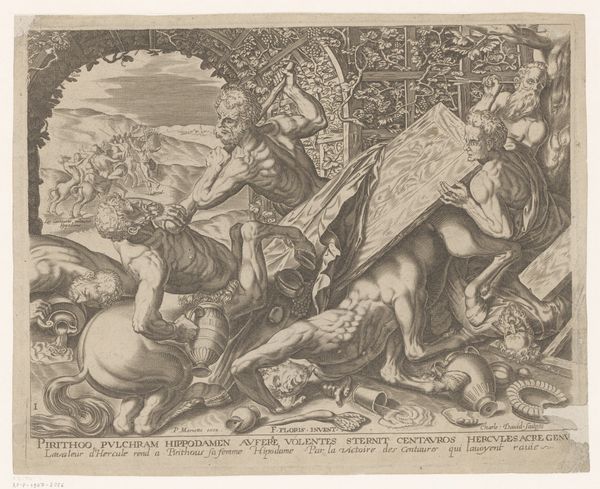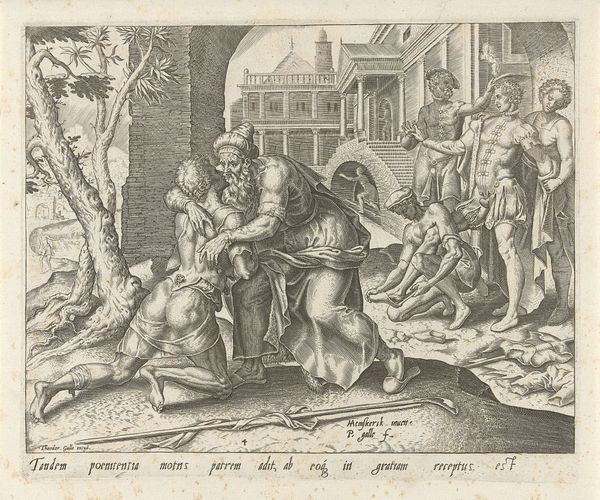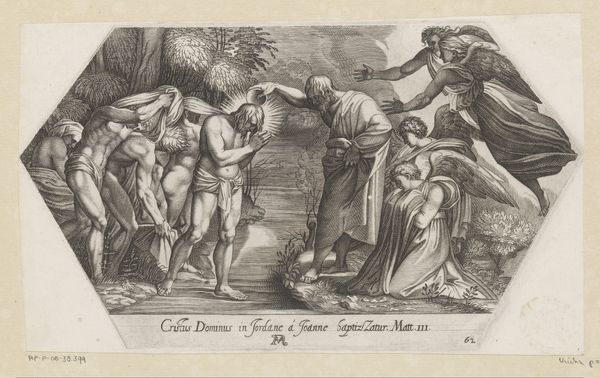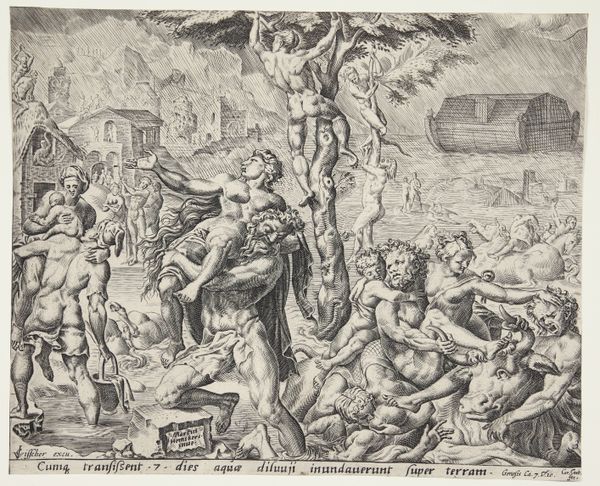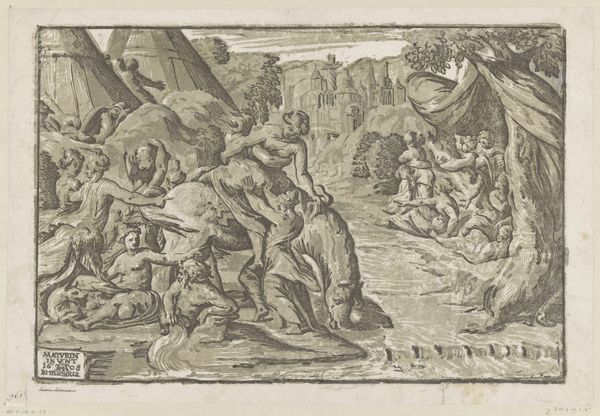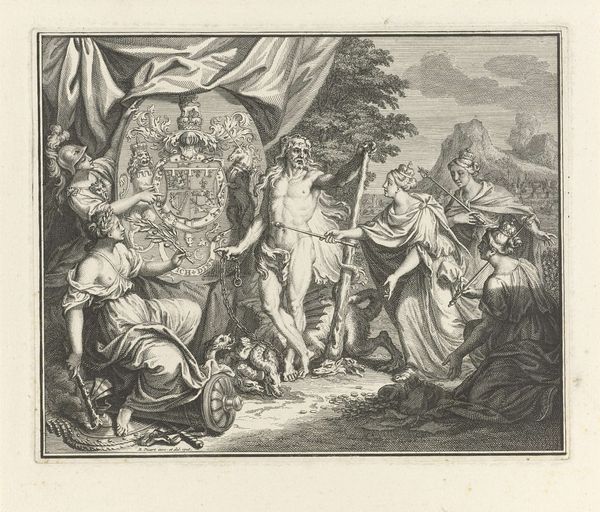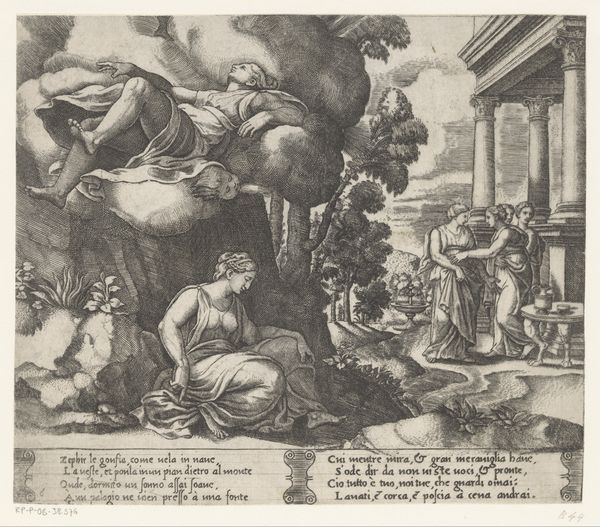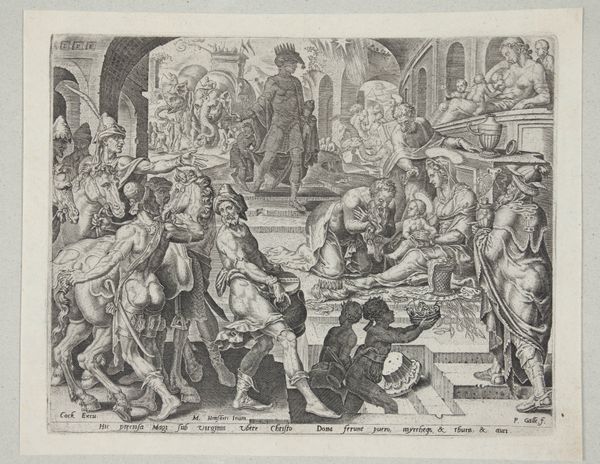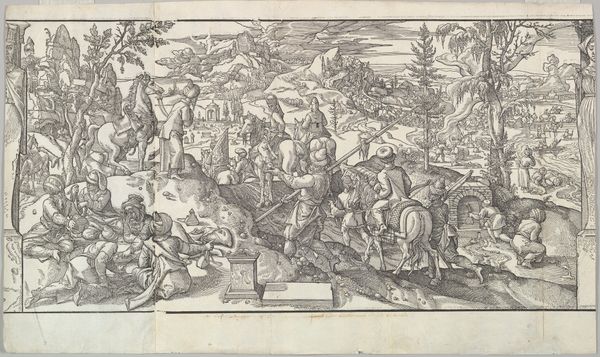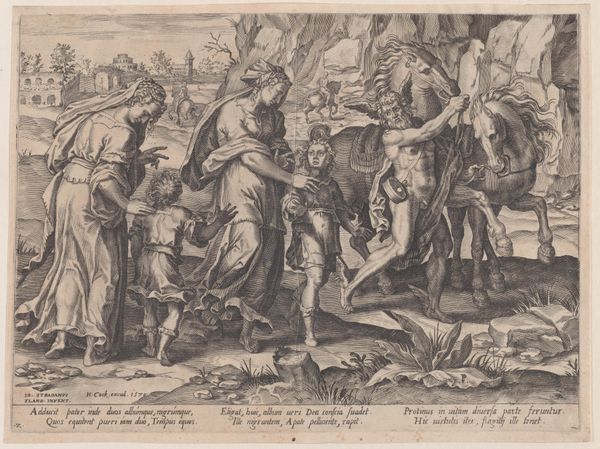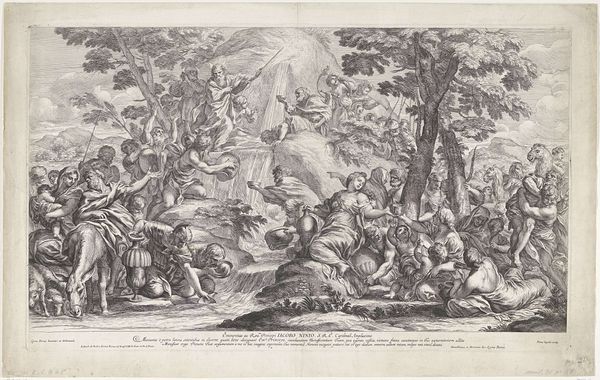
drawing, print, etching, ink
#
drawing
# print
#
pen illustration
#
pen sketch
#
etching
#
figuration
#
11_renaissance
#
ink
#
history-painting
#
italian-renaissance
Dimensions: height 168 mm, width 222 mm
Copyright: Rijks Museum: Open Domain
Curator: Looking at this piece, I'm struck by the casual tenderness evoked through simple line work. Editor: It feels idyllic, yet somewhat melancholic, don’t you think? Almost like a fading memory etched in ink. Curator: Let's contextualize. What we have here is an etching entitled "Holy Family with the young John the Baptist," created after 1634. Though attributed to anonymous, its cultural symbolism feels distinctly Renaissance Italian. Editor: "Holy Family," a stock trope of the era; but even as a relatively small, seemingly straightforward etching, it presents a powerful case for family and continuity during periods of rampant class struggle. Notice the inclusion of John, later considered a great prophet: including him foreshadows change and potential conflict in the family. Curator: The youthful innocence of the figures really highlights a kind of utopian desire—Joseph with his gentle, guiding hand and even the playful antics between the children. We often see similar imagery used as a moralizing message. Editor: Agreed. But I would also say the piece works well to subtly counter the pervasive patriarchal notions prevalent at the time, not merely within domestic or church environments, by spotlighting alternative masculinities through Joseph. This wasn't some inaccessible painting hung out of reach in some gallery, it could have been distributed across different households and communities in order to spread its message! Curator: That's an astute point. Considering it as a circulating print dramatically alters its reading—especially within those domestic spaces. There is the comfort, security, but also, perhaps, quiet resilience depicted here. Editor: What is quite striking to me, is its focus on an important aspect of social life. Though seemingly simplistic in subject matter and materials (etching and ink), there's something quite forceful within this tiny space; something timeless about its reach and lasting influence, not just religiously but also philosophically. Curator: Indeed, a testament to the potency of these visual codes, still engaging us across centuries.
Comments
No comments
Be the first to comment and join the conversation on the ultimate creative platform.

